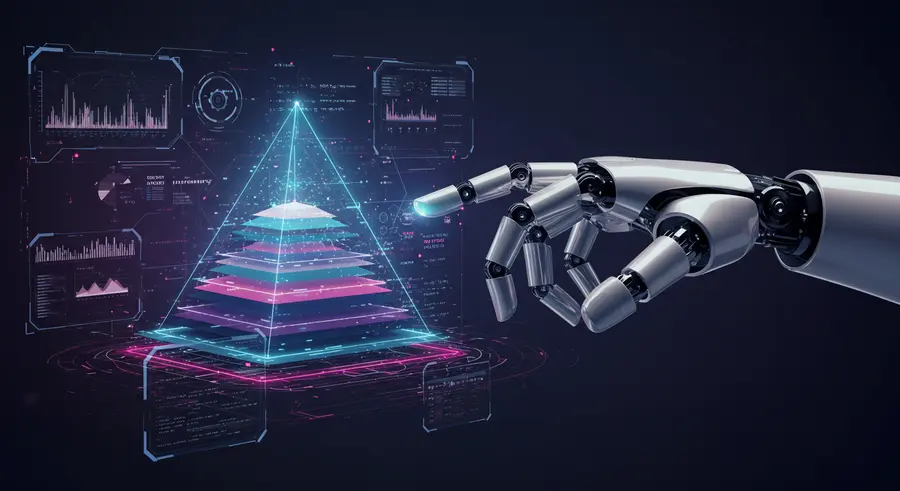Appearance

Welcome, fellow developers and quality assurance enthusiasts! 👋 Today, we're diving into a topic that's rapidly transforming the landscape of software development: the integration of Artificial Intelligence (AI) in Software Testing. While the concept of automated testing has been around for a while, AI is ushering in a new era of intelligence, efficiency, and precision to our QA processes.
In this article, we'll explore how AI is revolutionizing software testing, particularly in the context of the well-established Testing Pyramid. If you're not yet familiar with this foundational concept, I highly recommend checking out our comprehensive guide on Understanding the Testing Pyramid.
🚀 The Evolution of Testing: From Manual to Intelligent Automation
For years, software testing has relied on a mix of manual efforts and traditional automation. While automation significantly boosted efficiency, it often required extensive scripting and maintenance, especially for complex applications. This is where AI steps in, bringing capabilities that were once the stuff of science fiction:
- Self-healing tests: AI can identify changes in the UI and automatically update test scripts, reducing maintenance overhead.
- Intelligent test case generation: AI algorithms can analyze application code and user behavior to generate optimal test cases, covering more scenarios with less effort.
- Predictive analytics: AI can predict potential defects based on historical data and code changes, allowing teams to address issues proactively.
- Enhanced exploratory testing: AI can act as an intelligent assistant, guiding human testers to uncover deeper issues and edge cases.
🏛️ AI and the Testing Pyramid: A Synergistic Approach
The Testing Pyramid, a concept popularized by Mike Cohn, advocates for a strategic balance of different test types: a large base of fast, inexpensive unit tests, a mid-layer of integration tests, and a small top layer of slower, more expensive UI tests. Let's see how AI can amplify each level:
🎯 Base: Unit Tests (AI-Assisted Code Analysis)
Unit tests are the bedrock of the testing pyramid. They are fast, isolated, and provide immediate feedback on the smallest components of your code. AI can supercharge unit testing by:
- Automated Test Data Generation: AI can analyze code and generate realistic and diverse test data for unit tests, reducing manual effort and improving test coverage.
- Code Coverage Optimization: AI can help identify areas of the codebase with low test coverage and suggest new unit tests to improve it, ensuring critical paths are thoroughly validated.
- Early Bug Detection: By analyzing code patterns and potential vulnerabilities, AI tools can flag issues even before unit tests are written, catching bugs at the earliest possible stage.
🔗 Middle: Integration Tests (AI for API and Microservices Testing)
Integration tests verify the interactions between different modules or services. In modern, distributed architectures like microservices, these interactions can be complex. AI can bring significant value here:
- API Test Automation: AI can analyze API specifications and traffic patterns to automatically generate and execute API tests, ensuring seamless communication between services.
- Dependency Management: For microservices, AI can help identify and manage dependencies between services, ensuring that changes in one service don't inadvertently break others.
- Performance Bottleneck Identification: AI can analyze performance data from integration tests to pinpoint bottlenecks and suggest optimizations, leading to faster and more reliable systems.
🖼️ Top: UI Tests (AI-Powered Visual and Functional Testing)
UI tests, while crucial for user experience, are often the most brittle and time-consuming. AI offers groundbreaking solutions:
- Visual Regression Testing: AI-powered tools can compare screenshots of your UI across different builds and environments, accurately detecting visual discrepancies that human eyes might miss. This ensures a consistent and pixel-perfect user interface.
- Smart Element Locators: Instead of relying on static selectors that break easily, AI can use computer vision to intelligently locate UI elements, making tests more robust and less prone to failure when UI changes.
- User Journey Simulation: AI can learn typical user behaviors and simulate complex user journeys through your application, identifying usability issues and potential roadblocks. This goes beyond simple clicks and inputs, mimicking real-world user interactions.
💡 Examples and Use Cases
Let's look at some practical applications of AI in testing:
- Automated Anomaly Detection: Imagine an AI system monitoring your application's logs and performance metrics in real-time. It can detect unusual patterns (anomalies) that might indicate a bug or performance degradation, even before users report it.
- Chatbot Testing with NLP: For applications with chatbots, AI-powered NLP (Natural Language Processing) can be used to test conversational flows, ensuring the chatbot understands user queries and provides accurate responses.
- Accessibility Testing: AI can analyze your web application for accessibility compliance, identifying issues like missing alt text, low contrast, or keyboard navigation problems, making your application more inclusive.
🌐 The Future is Intelligent Testing
The synergy between AI and software testing is undeniable. As AI capabilities continue to advance, we can expect even more sophisticated testing tools and methodologies. This doesn't mean human testers will become obsolete; rather, their roles will evolve to focus on higher-level tasks, strategic planning, and interpreting AI-generated insights.
By embracing AI in our testing strategies, we can build more robust, reliable, and user-friendly web applications. It's about working smarter, not just harder, and delivering exceptional quality with every release.
What are your thoughts on AI in software testing? Share your experiences and insights in the comments below! 👇